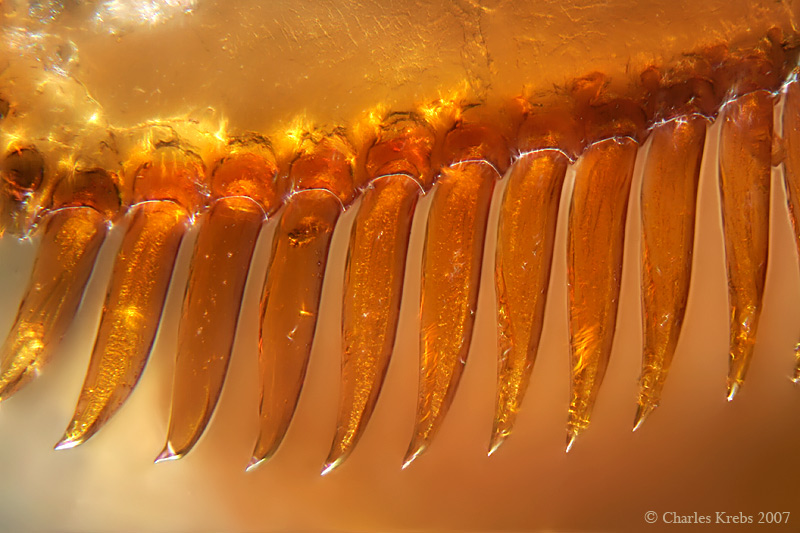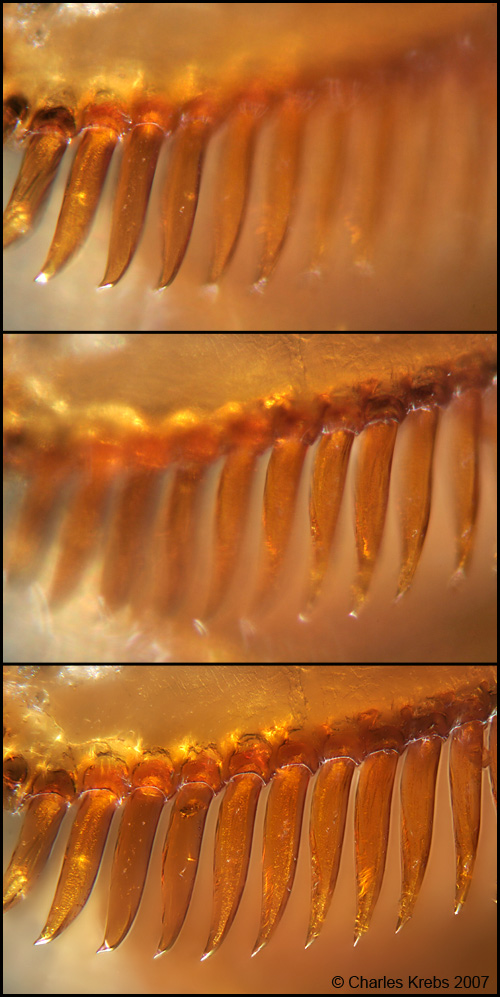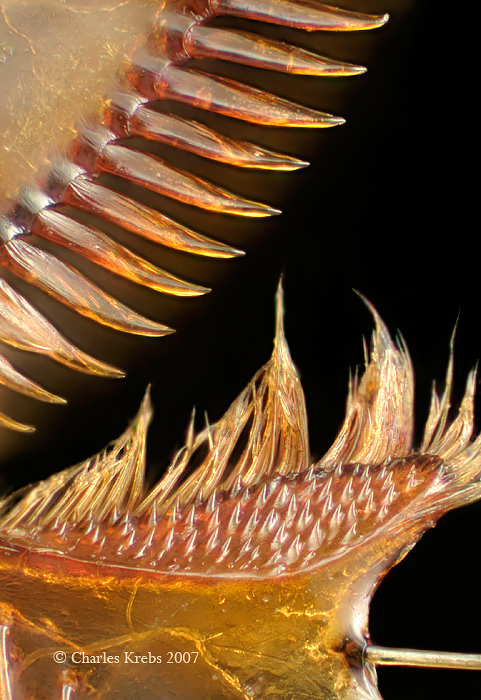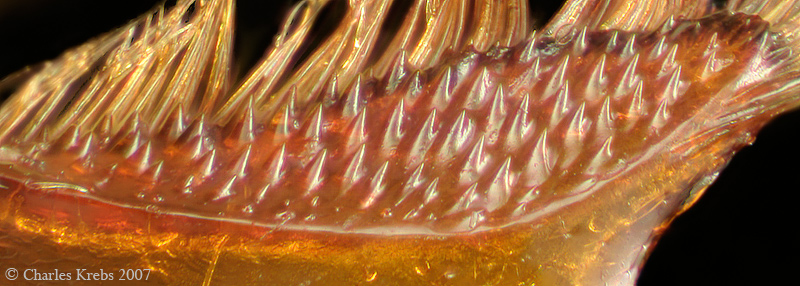On the honey bee leg image posted the other day I pointed out the pollen rake. The slide was still on the scope so I decided to look at it in more detail. The bee uses this "rake" to scrape together the pollen that is collected on the pollen brush of the opposite rear leg. This pollen is then moved into the leg joint where it is crushed against the auricle as the bee flexes its leg. It is then stored in the pollen basket located on the outside of the tibia. The tips of each bristle is flattened and squared off, like a slot screwdriver tip (you can see this best on the two or three at the left side). The bristles have various amounts of "twist" to them, perhaps making them perform their function more efficiently.
This was taken with a 25x Zeiss Neofluor using the same incident lighting used for the overall leg shot. I was sort of surprised that it illuminated as well as it did since the working distance is so small. I was also surprised that it "stacked" pretty nicely since each individual image looked rather hopeless.





